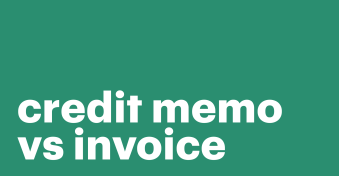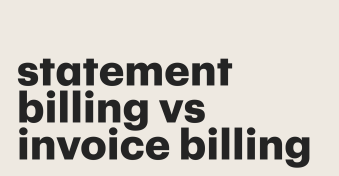Invoices are business documents that contain important information about a transaction, including the cost of goods (or services) sold.
You can include either net or gross prices on your invoices depending on your business needs.
When it comes to debating gross invoices vs net invoices, it’s important to understand the differences between them and their advantages.
What is gross pricing?
Gross cost definition: The total cost of an item, including the unit price and any other costs or fees.
These include sales taxes (such as value-added tax, or VAT, in the EU and the UK), customs fees, and transportation costs.
To calculate your gross cost, add up all the costs associated with an item’s purchase and add them to the item’s unit price.
For instance, say you sell t-shirts, and each t-shirt has a unit price of $8.00.
If you sell your t-shirts in the UK, you’ll have to pay import VAT of 20%, which is $1.60.
You’ll also have shipping and transportation costs, which may add another $2.00 to the cost of each t-shirt. So, your gross cost will be $8.00 + $1.60 + $2.00 = $11.60 per t-shirt.
Using the gross amount on invoices can simplify the billing process by automatically including taxes and fees in the sales price.
You can also include the cost of any discounts or promotions, or have a separate “Discount” column.
What is net cost?
Net cost definition: The pre-tax cost of an item, minus any discounts or promotions.
To calculate your net costs, subtract the cost of any taxes, discounts, and so on from an item’s gross price.
Let’s go back to our previous example of t-shirts, where the gross price for each t-shirt is $11.60.
If you have a 10% off sale, each t-shirt will have a discount of $1.16. You’ll also need to subtract VAT and your shipping and transportation costs. So, your net cost will be $11.60 ー $1.16 ー $1.60 ー $2.00 = $6.84 for each t-shirt.
If you use sales invoice software, you can calculate your gross vs net cost automatically.
This saves time and reduces the chances of costly errors.
Plus, you can generate a sales invoice in seconds using customizable templates.
Including the net amount on invoices lets you (and your customers) see what your goods or services actually cost.
They also break down the cost of each item, helping you track your spending and identify cost-saving opportunities.
Gross invoice vs net invoice: Learn the difference
The main difference when it comes to gross cost vs net cost is that net cost doesn’t include taxes or fees, whereas gross cost does.
Gross invoices automatically include each item’s acquisition costs.
They may also include discounts, but unlike net invoices一they don’t provide an itemized breakdown of the different taxes and deductions.
Instead, a gross invoice shows a single figure representing each item’s total cost.
A net invoice shows the original cost of an item, with separate columns for taxes and discounts.
Both types of invoices can include features like integrated payment buttons and electronic signature fields so customers can sign and pay invoices electronically.
If you’re not sure how to sign an invoice, you simply click in the “Signature” box and either draw, upload, or type your signature.
Net amount vs gross amount in invoices: Which to choose?
There’s no right or wrong answer when it comes to choosing net price vs gross price for invoicing.
Which is right for you depends on your company and your personal preference.
Companies that are tax-exempt may prefer net invoices since they show the price of an item without added fees.
Net invoices also make it easy to measure the impact of discounts and identify areas for cost savings.
For example, you might see that you’re spending a lot on transportation.
You can then look at whether there’s a cheaper alternative, like bulk shipping.
On the other hand, some companies prefer the simplicity of gross invoices for record-keeping.
Also, gross invoices show customers exactly what they have to pay without worrying about taxes, shipping, and so on.
Let’s look at examples of how to write an invoice using net pricing vs gross pricing:
Gross invoice example
A gross invoice contains important information, such as:
- Name and contact details of your company and the buyer
- The date you sent the invoice
- Invoice number
- Payment terms
- Electronic signature fields
- Payment buttons/links to payment gateways
There’s also a pricing table that includes the name, quantity, description, and gross price of each item, as well as the total amount due.
For example:
| Name | Description | Price | Quantity | Subtotal |
|---|---|---|---|---|
| [Item 1 name] | [Item 1 description] | $22.00 | 1 | $22.00 |
| [Item 2 name] | [Item 2 description] | $16.50 | 2 | $33.00 |
| Total Amount Due: | $55.00 |
Net invoice example
A net invoice also contains the contact details, invoice number, and so on, plus a pricing table.
But, unlike a gross invoice, it also lists the unit price and any taxes (like VAT) or discounts for each item. It may also include the net total along with the total amount due.
For example:
| Name | Description | Unit Price | Quantity | Discount (10%) | Subtotal |
|---|---|---|---|---|---|
| [Item 1 name] | [Item 1 description] | $20.00 | 1 | ー$2.00 | $18.00 |
| [Item 2 name] | [Item 2 description] | $15.00 | 2 | ー$3.00 | $27.00 |
| Net Total: | $45.00 | ||||
| VAT (20%): | $10.00 | ||||
| Total Amount Due: | $55.00 |
Create the right invoice that fits your needs
The advantage of including the gross price on invoices is simplicity.
Gross invoices show the total cost of each item, making it easy to keep accurate records of your transactions.
The advantage of using the net price on invoices is that you can see the true cost of an item without taxes.
Net invoices are especially beneficial for tax-exempt companies and companies looking to keep in-depth spending records.
They also ensure you comply with relevant tax rules.
Whichever type of invoice is right for you, by using an invoice template, you can create an accurate invoice in just a few clicks.
Plus, you can add eSignature fields, payment buttons, and more to save time and increase efficiency for both parties.
Disclaimer
PandaDoc is not a law firm, or a substitute for an attorney or law firm. This page is not intended to and does not provide legal advice. Should you have legal questions on the validity of e-signatures or digital signatures and the enforceability thereof, please consult with an attorney or law firm. Use of PandaDocs services are governed by our Terms of Use and Privacy Policy.


